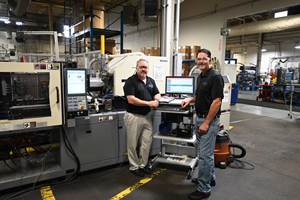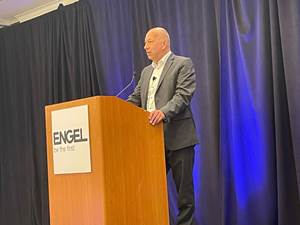Growth in Auto Production to Slow in 2016
Trends in leading indicators explain why.
The automotive industry has been fairly strong since 2010. Interest rates were low and incomes were improving, which spurred spending on motor vehicles and parts (MV&P). But the industry is likely to see its slowest growth since 2010 later in 2015 and into 2016. A look at the leading indicators explains why.
Real 10-Yr Treasury Rate: The real (inflation-adjusted) 10-yr Treasury Bond interest rate was 1.63% in June. The nominal rate is still only about a third of its historical average. However, inflation is historically low. The current annual average inflation is just 0.12% vs. a historical average of 4.15%. Therefore, the real Treasury rate is about two-thirds of its historical average. But low inflation is keeping real Treasury rates higher than in the recent past.
The Federal Reserve claims it will raise interest rates this year. However, with very low (or negative) inflation and a generally stable bond yield, it is likely that real 10-yr Treasury rates will continue to rise. Therefore, the trend in the real 10-yr rate is a negative sign for future automotive spending. Rising rates make cars more expensive. And, there are signs that new car sales have relied fairly significantly on sub-prime auto loans in 2015. Higher rates make it harder to find eligible sub-prime buyers.
Real Disposable Income: May’s real disposable income was roughly $12.3 billion (seasonally adjusted at an annual rate), an all-time high. In May, disposable income grew 3.5% compared with a year ago for the second month in a row. The current rate of annual growth was 3.1%. It appears that disposable income will see further accelerating growth over the next few months, but there are signs that it is nearing its peak rate of growth. While the trend in disposable income is a positive sign for automotive spending, it is likely outweighed by the trend in interest rates.
Real Motor Vehicle & Parts Consumer Spending: In May, real MV&P spending was at its highest level since July 2005 and its third highest level ever. Since 2010, the annual growth rate of spending has generally accelerated. In 2015, the annual rate of change in MV&P spending has grown at a rate of about 8.5%. The current rate of growth was more than double the historical average.. While the spending numbers are positive, the trend within the data indicates that spending is likely to grow at a slower rate in the near term.
Motor Vehicle & Parts Industrial Production: Automotive production tends to lag spending by up to six months. So, if the industry is entering a period of slower growth in spending, then MV&P production should see slower growth in 2016. Also, growth in production is likely to slow because the rate of growth in production since 2010 has been well above the rate of growth in spending (see chart).
Related Content
Honda Now Exploring UBQ’s Biobased Material Made from Unsorted Household Waste
UBQ is aiming to expand its reach for more sustainable automotive parts as well as non-automotive applications.
Read MoreAtop the Plastics Pyramid
Allegheny Performance Plastics specializes in molding parts from high-temperature resins for demanding applications as part of its mission to take on jobs ‘no one else does.’
Read MoreGetting Charged Up About Electric Vehicles
Metal-to-plastics replacement stories are a classic of the genre for plastics publishing, and nowhere more so than in the automotive space.
Read MoreMolder Repairs Platen Holes with Threaded Inserts
Automotive molder ITW Deltar Fasteners found new life for the battered bolt holes on its machine platens with a solution that’s designed to last.
Read MoreRead Next
Advanced Recycling: Beyond Pyrolysis
Consumer-product brand owners increasingly see advanced chemical recycling as a necessary complement to mechanical recycling if they are to meet ambitious goals for a circular economy in the next decade. Dozens of technology providers are developing new technologies to overcome the limitations of existing pyrolysis methods and to commercialize various alternative approaches to chemical recycling of plastics.
Read MoreHow Polymer Melts in Single-Screw Extruders
Understanding how polymer melts in a single-screw extruder could help you optimize your screw design to eliminate defect-causing solid polymer fragments.
Read MoreLead the Conversation, Change the Conversation
Coverage of single-use plastics can be both misleading and demoralizing. Here are 10 tips for changing the perception of the plastics industry at your company and in your community.
Read More
.JPG;width=70;height=70;mode=crop)






















